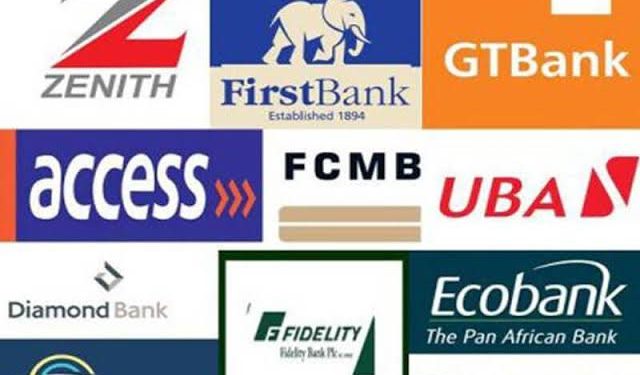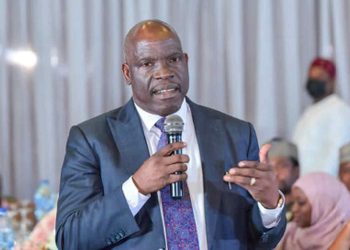Banking halls across Lagos, Abuja, and Port Harcourt hum with quiet tension. Account holders glance nervously at digital notifications, traders in kiosks pause mid-transaction, and corporate finance officers pace over looming deadlines. The stability of Nigeria’s banking system, long considered a backbone of the nation’s economy, now faces unprecedented scrutiny. From the bustling urban centers to the rural communities that depend on local branches, the sector’s resilience is under the microscope.
Recent liquidity pressures, coupled with rising loan defaults and global economic shocks, have brought banks into unfamiliar territory. Analysts warn that institutions once praised for robust capitalization may now find themselves navigating a maze of regulatory expectations, dwindling investor confidence, and a public increasingly skeptical of digital and traditional banking alike. Customers no longer just trust brands—they monitor every transaction for signs of instability.
Bankers, too, feel the weight of the moment. Junior tellers and senior executives alike recount the unusual surge in customer inquiries and withdrawal requests. “It’s different this time,” one branch manager admitted, speaking on condition of anonymity. “People are nervous, and their nerves affect our operations. We are seeing a fear-driven behavior that could spiral if not managed carefully.” This human dimension of financial instability—fear, uncertainty, and the sense of vulnerability—underscores the sector’s fragility.
A deeper look reveals systemic challenges. Non-performing loans (NPLs) have risen sharply, particularly among small and medium-sized enterprises (SMEs) that rely on credit to sustain operations. Coupled with foreign exchange volatility and a weakening naira, these financial pressures are creating a feedback loop: banks tighten lending, SMEs struggle to grow, employment slows, and public confidence diminishes. Each link in this chain is a human story of aspiration, risk, and disappointment.
Regulatory oversight, while rigorous, now faces its own stress test. The Central Bank of Nigeria (CBN) has issued new guidelines aimed at shoring up liquidity and ensuring capital adequacy, yet enforcement remains challenging across the sector. Regional disparities in compliance, compounded by technological gaps in monitoring, leave certain banks exposed. The public, meanwhile, watches for any hint of intervention—any sign that the CBN or the Nigeria Deposit Insurance Corporation might step in to protect savings.
Digital banking platforms once heralded as a pathway to financial inclusion, now present dual realities. Mobile apps and online platforms ease access, but they also magnify panic. A minor service disruption can lead to disproportionate anxiety among customers, triggering withdrawal surges or transaction freezes. Nigeria’s tech-savvy population, while adaptable, reacts swiftly to perceived instability, turning social media into both a rumor mill and a pressure valve for public sentiment.
Investor sentiment has similarly turned cautious. Domestic and foreign investors are increasingly selective, scrutinizing balance sheets and management disclosures with renewed vigilance. Capital inflows slow, stock valuations fluctuate, and strategic mergers or acquisitions face delays. The banking sector’s credibility, once bolstered by market optimism, now hinges on transparency, crisis management, and the ability to demonstrate sound risk controls.
Human stories illustrate the stakes. Traders in Kano, who rely on timely bank transfers to supply markets, report delayed payments affecting daily livelihoods. Students in Lagos struggle to pay tuition as their parents’ transfers stall. Retirees in Port Harcourt anxiously check pension remittances, fearing delays that could disrupt basic survival. These individual experiences, multiplied across millions, expose a broader truth: banking instability is not an abstract economic phenomenon—it reverberates through families, communities, and the national psyche.
Economic commentators note that the test for Nigeria’s banks is not only operational but reputational. Historically, crises have exposed weaknesses that extend beyond balance sheets, touching governance, transparency, and public accountability. Recovering public trust requires more than monetary intervention—it demands a visible commitment to safeguarding deposits, addressing structural inefficiencies, and preemptively communicating risks.
Policy responses have begun, though cautiously. The CBN has introduced emergency liquidity facilities for affected banks, alongside stress-testing exercises to identify vulnerabilities. Some banks have proactively strengthened internal audit and risk management functions. Yet the challenge remains: interventions must stabilize the system without creating moral hazard, where poorly managed institutions rely on repeated bailouts instead of sustainable reform.
The human dimension of this test cannot be overstated. Every delayed transaction, frozen account, or rumored instability carries real consequences—missed salaries, disrupted supply chains, and psychological stress. The banking sector’s health directly affects consumer confidence, investor behavior, and economic growth. Failure to manage this moment could ripple beyond financial markets, threatening job security, commerce, and social stability.
Regional disparities also complicate recovery. Northern and rural banks, often constrained by infrastructure limitations, face challenges in digital adoption and liquidity management. Southern commercial hubs, while better resourced, confront larger exposure to global market fluctuations and foreign currency constraints. Balancing national financial stability requires tailored strategies, recognizing that a one-size-fits-all solution may leave vulnerable communities at risk.
Looking ahead, strategic collaboration between regulators, bank executives, and civil society will be crucial. Public education campaigns, proactive customer communication, and reinforced cybersecurity measures are necessary to rebuild confidence. The sector’s response will define Nigeria’s financial narrative for years to come—either as a resilient system weathering shocks or as an institution struggling under preventable pressures.
The stakes are clear. Nigeria’s banking sector is not only a pillar of economic growth but a daily lifeline for millions. Every transaction carries trust, every savings account reflects security, and every loan represents opportunity. Navigating this test successfully requires vigilance, empathy, and decisive action. Failure is not an option, as the repercussions touch not just profits but the lives of ordinary Nigerians who depend on the sector for stability, mobility, and hope.

Samuel Dayo creates high-quality content that resonates with readers. His work spans governance, culture, business, and tech.

















